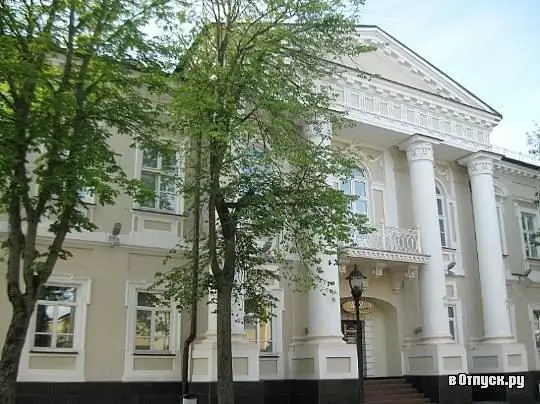
Description of the attraction
The palace of the Grodno vice-governor Maksimovich was built in 1803. Its main architectural feature is that, despite the peculiarities of the relief, thanks to which it received the shape of the letter "G", its facade was built in the correct symmetry of the classicism style, which was fashionable at the beginning of the 19th century.
In the central part of the palace there is a four-column portico with elements of the Doric and Corinthian orders. The entrance to the courtyard is arranged between the columns. Above the entrance there is a balcony with an elegant openwork forged lattice.
Inside the building, a grand staircase rises from the luxurious lobby to the second floor. On the first floor there are ceremonial halls, on the second there are long corridors, from which there are doors to small rooms.
Several significant historical events are associated with this palace. One of them happened during the Napoleonic War. Napoleon Bonaparte's brother Jerome Bonaparte liked the new, recently built luxurious palace so much that, instead of going to war, he stayed in this luxurious house to arrange balls, have fun and start romantic adventures with the ladies of Grodno. Because Jerome was more interested in balls and holidays, he was nicknamed King Erema.
In 1920, a revolutionary committee was located here, where F. E. Dzherzhinsky. Later there was a people's house, a music school and a school for the elimination of illiteracy in Grodno. In Soviet times, the Grodno Regional Executive Committee was located in the palace.






